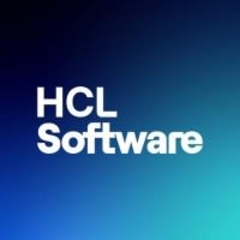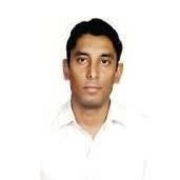What is our primary use case?
Currently, we've got four big customers, and one is in mining. It's certainly for endpoint management, especially for patch compliance. That's normally our first use case. It's for Windows and Linux patch and patch compliance measurement. That's the biggest use case that we do.
The main use for day-to-day operations is patching, and we are averaging 95 to 98% patch compliance, meaning we deployed almost 8,000. We put upgrades now in Africa, which is small. however, has 8,000 to 10,000 endpoints, and we have two people doing that, and it takes us about half a day a month.
The second use case is when we do compliance, and we replacing Microsoft DPOs, it makes it much easier to implement. On the compliance level, we always do level compliance due to the fact that BigFix has got the CIS, and we use the CIS standards for the checklist.
Another company that we work with is in the energy sector. They are an energy company in Africa, and one of the things that we did was we helped them to migrate from Windows 7 to Windows 10 as one of the components of BigFix is Lifecycle OS Deployment. In that case, we helped them and they successfully migrated almost three and a half thousand Windows 7 and Windows 10 machines in three months. We used the BigFix OSD processor.
Some of those countries, like Zimbabwe, Zambia, and Angola, didn't even have a network. We did the upgrade fully with memory sticks. We gave them USB thumb drives or memory sticks, and everything was on there, and they took that and actually went and the machines were upgraded that way.
How has it helped my organization?
The big drive at the end of the day is money-saving. You can accomplish a lot even if you have a very low-level resource and no access to other skilled resources. You give someone a thumb drive and he can plug it in, boot the machine, and 20 or 30 minutes later, the machine is fully completed from a pre-defined standard.
We used the solution to get control over licensing. We were able to avert a drop at the end of a three-year contract and in the process saved the client about $5 million in penalties.
What is most valuable?
The patch compliance is very good.
It's very easy to upgrade solutions, even in low-technology environments.
The stability is perfect.
The roll-out is super-easy.
The solution is unbelievably scalable.
We're not restricted on/off-network, and we don't have to be a member of a domain. You can be on a workgroup, laptop, Mac, et cetera.
What needs improvement?
Historically, the company used to belong to IBM, and there was competition between MaaS360 and BigFix components. They neglected the mobile portion, or the mobile device management portion of BigFix. It has been sold. IBM sold it two years ago to HCL of India.
Therefore, that's one thing that's lacking - the mobile side. They don't have a proper mobile device management capability. They're working on it, however, that's the one thing that needs improvement so that you can have full unified endpoint management.
The ability to handle removable media encryption on the removable media label, et cetera, is lacking due to the fact that you cannot really control your USB device. Of course, recently, we had a use case where we had to lock down the USB devices, but there were, for instance, certain machines that were on a very specific model of USB drives that had a license key. This customer was using licensed software, and the license was on the USB stick. Now, the USB stick must be in the machine the whole time in order to use the application.
The solution needs to bring back the granular control of the USB devices that they offered a year or four years ago. That way, you can say "these devices are allowed" or "these devices are not allowed". That's the one major thing, in my opinion, that they could rethink, USB device control for removable media.
They're doing a lot of work on remote control. They are working on making it very, very simple. However, ti's not quite there yet.
For how long have I used the solution?
I've been using the solution for five years at this point.
What do I think about the stability of the solution?
The stability on this solution is rock solid. I will put money up against it. BigFix is absolutely unbelievably stable. We never had any data corruption of any kind while using it.
What do I think about the scalability of the solution?
You can do 250,000 endpoints with a machine that's got 32 bits of RAM and about 300 GB of disc space. That's the one thing about BigFix that makes it unique. The way you can easily scale is great. That's a biggie. Scalability is absolutely amazing.
I'm a little bit out of that department now, however, in Africa, in which that market is small, we've got between 20 or 30 customers. The big ones we have about 10,000 endpoints that we manage for them, and we are three people. There is only one team lead and two junior techs and we manage all the endpoints for them. Some of those endpoints are on the internet. Even if you're not on a corporate network, we can still monitor your environment on the same site. We can even give instructions in case of emergency to say, "Download this patch," or "Apply this patch," or "Change this compliance status," et cetera, with a GPO Microsoft directory.
How are customer service and technical support?
The technical support, when the solution moved from IBM to HCL, improved dramatically. The technical documentation, the quality of the upgrades, et cetera, is really, really fantastic. I'm very glad IBM sold the product off to HCL as the quality of the product and everything surrounding it, including technical support, has improved dramatically. It's very good. We're quite satisfied.
How was the initial setup?
The initial setup is not complex at all. It's very straightforward.
What's my experience with pricing, setup cost, and licensing?
BigFix does license per server and per workstation. The cost depends on how many servers or work stations you are dealing with, and which tier of service you use.
BigFix consists of four modules. You get what we call the Platform Edition, which you get for free. The patch service is maybe $0.50 per workstation per month. Then there's the basic server cost, which is about $1.50 per server per month. You also get into Lifecycle which does power management, OSD remote control, and those types of things, and that might be about 10 times the price - which works out to about $13 per server and, maybe $5 per workstation per month.
It's all pretty customizable and you can just get the bare minimum or trade-up for a bit more.
Which other solutions did I evaluate?
We've looked at Microsoft SCCM, among others. At the end of the day, we looked for something fit for a really small company. We looked for something that can be simple, easy to deploy, and that was one of the reasons we chose BigFix.
The main drive around BigFix was the fact that you don't need a lot of people to run it. That was one of the reasons we chose BigFix because it was small, or you can easily implement it on a very big scale, and one person can actually manage a lot of customers remotely. That was the reason we picked it. It was the only one that actually met those criteria at that point in time.
What other advice do I have?
I'm not using the latest version of the solution. I'm actually using the version before the latest.
I would advise that, before you buy the solution, you do a POC. You can do a 48-hour challenge where, if you start at 9 AM, you will be able to give patch compliance by 12 noon (for 1,000 endpoints). You've got three hours to install the product, get it up and running, deploy the agents, et cetera. Basically, take some time to test drive the product.
Overall, I'd rate the solution ten out of ten. I think it's a phenomenal product.
Which deployment model are you using for this solution?
On-premises
Disclosure: My company has a business relationship with this vendor other than being a customer. Partner

















